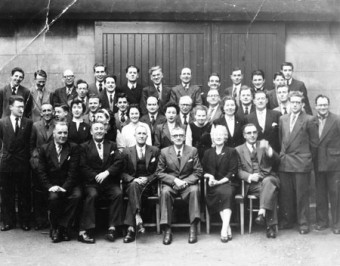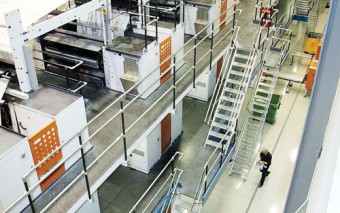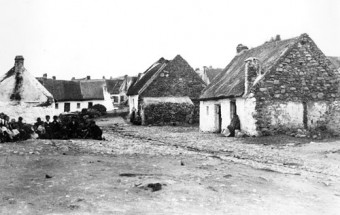Search Results for 'the Connacht Tribune'
37 results found.
The Connacht Tribune, one hundred years
The first issue of the Connacht Tribune was published on May 22, 1909. The newspaper was housed in Market Street, originally known as North Street (the Tribune side was known as North Street West). We know from the 1651 map that the site it occupied was originally part of the Athy Castle, also the castle belonging to the French family and part of the convent occupied by the Poor Clares. There was an underground passage from the convent running under Market Street and branching underground to St Nicholas’ Collegiate Church. This enabled the nuns who were and are an enclosed order, to attend services in the church, and to use the tunnel as a hiding place in times of persecution.
The Connacht Tribune, one hundred years

The first issue of the Connacht Tribune was published on May 22, 1909. The newspaper was housed in Market Street, originally known as North Street (the Tribune side was known as North Street West). We know from the 1651 map that the site it occupied was originally part of the Athy Castle, also the castle belonging to the French family and part of the convent occupied by the Poor Clares. There was an underground passage from the convent running under Market Street and branching underground to St Nicholas’ Collegiate Church. This enabled the nuns who were and are an enclosed order, to attend services in the church, and to use the tunnel as a hiding place in times of persecution.
Old Reynard read The Tribune
The Easter Rising on Monday April 24 1916, not only took the British authorities by surprise but also the general population of Ireland. In many places, including the town of Galway, the news that fighting had broken out in Dublin was greeted with amazement, and disbelief. Remember World War I was raging at the time. The Battle of Verdun, which was to continue until December with horrendous casualties, was at a critical stage. Its progress was extensively covered in all newspapers. Furthermore, as a result of an intensive recruiting campaign in both the town and county, there was barely a home in Galway that was not affected by the war. Young men in their thousands joined the British armed forces to defend their homeland, to protect the women of Belgium, for a sense of adventure and a decent wage; and in the words of the Irish Parliamentary Party, ‘ to win freedom for Ireland’.
Portrait of the writer as a young man
The great Welsh poet Dylan Thomas (Oct 27 1914 - Nov 9 1953) had absolutely no interest in school. He attended Swansea Grammar where his father, DJ Thomas, was the much feared English teacher. Both the boys and the staff were afraid of his temper, so much so that when Dylan, frequently bored with school, walked out murmuring that he was gong to write ‘bloody poetry’, if he met the headmaster on his way, the head would only nod, and say; “Don’t get caught, will you?”
Galway Races ready for the punters
The recession has hit hard, wallets are lighter, and the marquee is gone, yet this summer’s race meeting is set to battle against the odds, and provide as good a race festival as ever before.
Advertiser is runaway winner in local newspaper circulation race

The Galway Advertiser is the highest circulation local newspaper in the country, according to the latest audited figures released by the UK-based Audit Bureau of Circulation (ABC).
Distorted views of the Claddagh in the 19th century

English travellers came to Ireland in great numbers during the 19th century, and Galway formed an important stop on the typical tour. The stopover invariably involved token visits to Lynch's Castle, St Nicholas' Collegiate Church, and Queen's College. A visit to the Claddagh was part of the complement of must-see places, and it eventually became one of the most written about sites in Ireland. Many of these commentators travelled the same routes, stayed in the same country houses or hotels and the resulting texts are frequently similar in both content and perspective. The sameness of description permeates many travel accounts and over the century, new information is rare.

